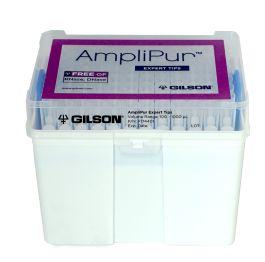Introduction:
In today’s fast-paced world, productivity is key to success. Whether you’re a student, a professional, or simply someone who wants to make the most of their time, optimizing your Windows performance can go a long way in boosting your efficiency. By following expert tips and best practices, you can ensure that your computer is running smoothly and helping you accomplish more in less time. In this article, we will explore 10 expert tips to optimize Windows performance and boost productivity.
-
- Update Your Operating System Regularly:Keeping your Windows operating system up to date is crucial for optimal performance. Microsoft releases regular updates that include security patches, bug fixes, and performance enhancements. By ensuring that your system is always updated, you can avoid issues that could slow down your computer and improve overall stability.
-
- Manage Startup Programs:One common reason for slow Windows performance is a cluttered startup process. Many programs automatically launch when you boot up your computer, which can significantly increase boot time and impact performance. By managing your startup programs and disabling unnecessary ones, you can streamline the boot process and speed up your computer’s overall performance.
-
- Clean Up Your Hard Drive:A cluttered hard drive can lead to sluggish performance and decreased productivity. Regularly cleaning up unnecessary files, temporary data, and old applications can free up valuable disk space and improve system responsiveness. Use built-in tools like Disk Cleanup or third-party software to scan and remove unneeded files from your hard drive.
-
- Defragment Your Hard Drive:Over time, files on your hard drive become fragmented, which can slow down read and write speeds. Running the built-in Disk Defragmenter tool can help organize and optimize your files for faster access. Schedule regular defragmentation sessions to keep your hard drive running efficiently and improve overall system performance.
-
- Manage Your System’s Virtual Memory:Virtual memory, also known as paging file, helps Windows manage memory usage when physical RAM is running low. By adjusting virtual memory settings, you can optimize performance and prevent system crashes. Set the paging file size to an appropriate value based on your computer’s configuration to ensure smooth operation.
-
- Optimize Power Settings:Adjusting power settings can have a significant impact on your computer’s performance and energy efficiency. By customizing power plans to match your usage patterns, you can optimize system resources and extend battery life on laptops. Choose balanced power settings for a good balance between performance and energy savings.
-
- Disable Visual Effects:Windows comes with various visual effects and animations that can consume system resources and slow down performance. Disabling unnecessary visual effects can help streamline your user interface and improve overall responsiveness. Navigate to the Performance Options settings to turn off visual effects that are not essential for your workflow.
-
- Install Antivirus Software:Protecting your computer from malware and viruses is essential for maintaining optimal performance. Install reputable antivirus software to detect and remove threats that could compromise your system’s security and performance. Regularly scan your computer for malware and keep your antivirus software updated to stay protected.
-
- Optimize Your Browser:Browsers are essential tools for productivity, but they can also impact system performance if not optimized properly. Clearing browser cache, disabling unnecessary extensions, and updating to the latest version can help improve speed and responsiveness. Use tools like AdBlocker to block ads and reduce load times for web pages.
-
- Upgrade Hardware Components:If you’ve tried all the software optimizations and still experience slow performance, it may be time to consider upgrading hardware components. Adding more RAM, replacing an old hard drive with a solid-state drive, or upgrading to a faster processor can significantly boost your computer’s performance and productivity. Consult with a hardware specialist to determine the best upgrades for your system.
Conclusion:
By implementing these expert tips to optimize Windows performance, you can enhance productivity and efficiency in your daily tasks. Regularly updating your operating system, managing startup programs, cleaning up your hard drive, and optimizing power settings are just a few ways to ensure that your computer is running smoothly and helping you accomplish more in less time. Experiment with different optimizations and find the best combination that works for your unique needs. Remember, a well-maintained computer is a productive computer!
- Upgrade Hardware Components:If you’ve tried all the software optimizations and still experience slow performance, it may be time to consider upgrading hardware components. Adding more RAM, replacing an old hard drive with a solid-state drive, or upgrading to a faster processor can significantly boost your computer’s performance and productivity. Consult with a hardware specialist to determine the best upgrades for your system.



